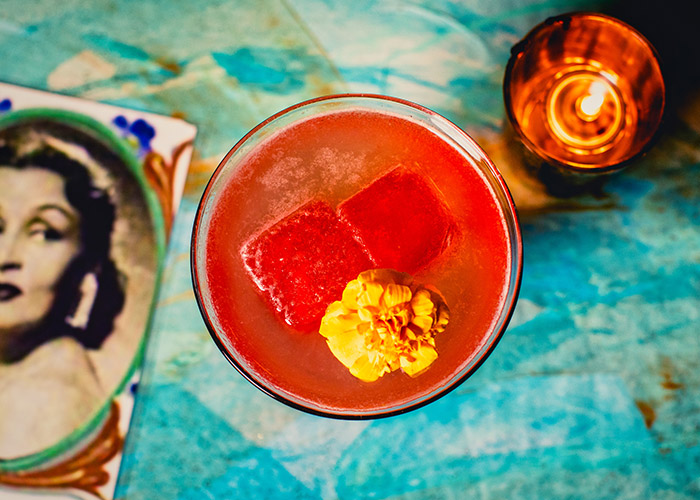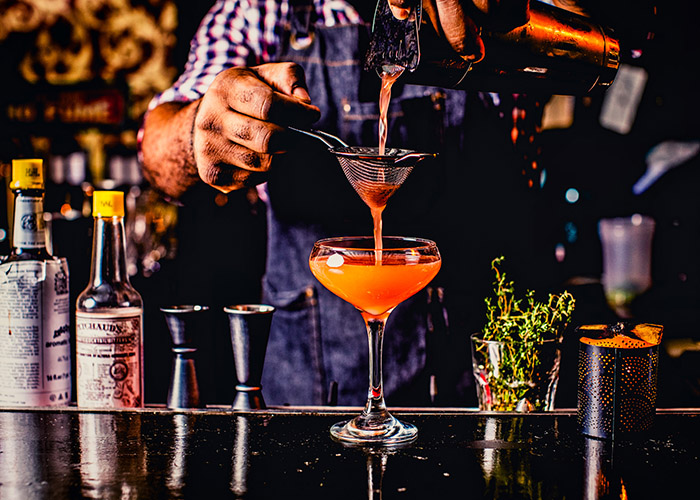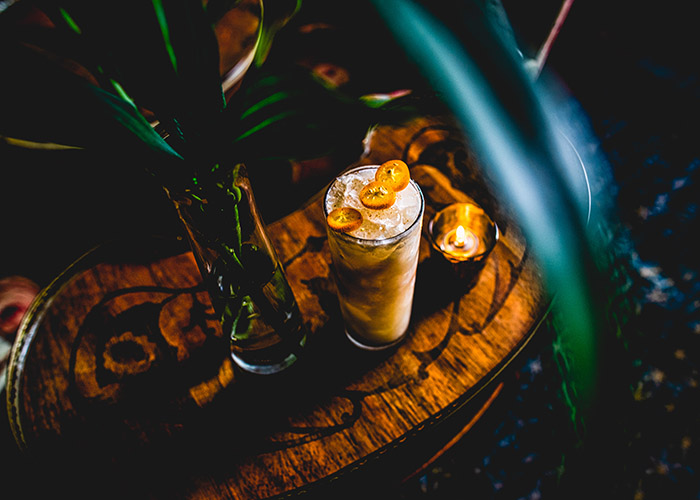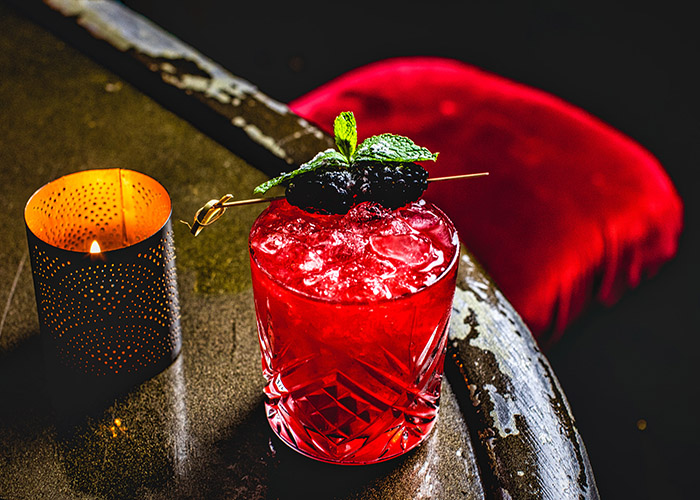Amari: Bitter Liqueurs and Where to Drink in Austin
Amaro and its cousins add depth and intrigue to cocktails and toddies
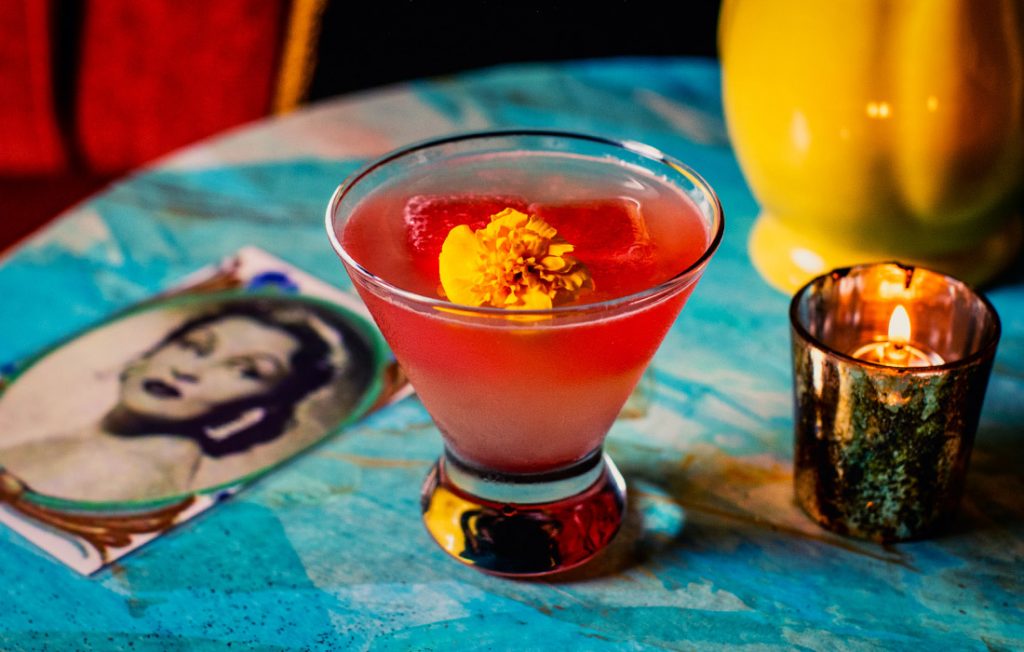
As the pandemic stretches into a new year, home alcohol consumption is unlikely to decrease anytime soon (sorry, Dry January) and quarantinis are so 2020. With that in mind, aided by Austin’s famously mercurial winter weather, I decided to write this month about herbal liqueurs like amaro, which means “bitter” in Italian.
Amari (plural) are traditionally consumed neat or on the rocks as an aperitivo (or apéritif, in French) to stimulate salivary glands and appetite or as a post-prandial digestive aid. But these venerable spirits are finding increasing popularity in American bars as a component in cocktails and toddies. More to the point, their literal and cultural use, while initially medicinal in origin, is rooted in taking the time to savor not just our food and drink, but the people we share them with.
Made by macerating the roots, stems, leaves, bark, seeds and flowers of plants in a neutral, high-proof spirit or wine base, often with the addition of fruits, vegetables, honey and other flavoring agents, amari are incredibly diverse in flavor and viscosity.

“I love how versatile and flexible they are,” says Paola Guerrero-Smith, chef and owner of Buenos Aires Café and the Milonga Room, a tiny amari bar tucked beneath the restaurant. “They provide such an experience, setting the tone for a get-together and opening the palate. You can start the evening with something a bit sweeter and caramel-ly or fruit-forward, and move into more herbaceous, smokey flavors after your meal.”
There’s science to back up the digestive and other medicinal merits of these herbal liqueurs. While early man knew to avoid plants with bitter compounds as they were often toxic, humans eventually discovered that certain bitter botanicals had alkaloids and volatile compounds possessed of antimicrobial, anti-inflammatory, antiseptic or antispasmodic properties. Still others trigger a sensory response in the mouth that causes the gut, pancreas and liver to produce digestive enzymes, which is why herbal liqueurs like amari are used as aperitivos or digestivos.
 A Rich History
A Rich History
While the ancient Egyptians are credited with creating bitter elixirs by steeping plants in wine to ease everything from gastrointestinal and respiratory issues to arthritis, hypertension and seizures, Europeans have been enthusiastic consumers of herbal liqueurs since the Middle Ages.
Renown spirits like Benedictine, Campari and Jägermeister, which were established in the 18th and 19th centuries, have become household names, and the increasing popularity of herbal spirits has led some American craft distillers to create their own versions, including the acclaimed amari from Colorado’s Leopold Bros. and New York’s Forthave Spirits. Revolution Spirits in Dripping Springs also makes a rendition, Amico Amaro.
Argentina also produces amari (known as amargo, a term used in Mexico, as well), a by-product of the nation’s mass influx of Italian and French immigrants in the late 19th and early 20th centuries. While only one – Fernet 1882 – is exported, Fernet-Branca, the bracingly bitter, licorice-forward Italian amaro brand, is the most ubiquitous in Argentina. It’s stocked at every restaurant and bar. In the home, it’s often proffered as an aperitif to visitors.
“Culturally, it’s traditional to catch up over a bit of Fernet before you head out,” says Guerrero-Smith. “And after you’ve eaten, you drink it to settle the stomach.”
 Continental Amari
Continental Amari
Along with its other European counterparts – French amer and the kräuterlikörs of Germany, Austria, Hungary and the Czech Republic – many amari makers incorporate wild-harvested native plants, giving their products a singular sense of place. Still, most herbal liqueurs have certain botanicals in common, like gentian, chinchona, cinnamon, wormwood and bitter orange. All are made from closely guarded family recipes, some containing upwards of 40 botanicals.
The terroir found in some herbal liqueurs goes beyond the use of native plants; how and where they’re consumed also reflects their origin and climate. Take génépy, a refreshing French and Italian herbal spirit made with foraged Artemisia blossoms native to the Savoy region of the Alps. Génépy is traditionally consumed après ski in hot chocolate or enjoyed neat or on the rocks as a post-fondue digestif. Despite its wintery associations, American bartenders have popularized it in lighter, summery cocktails often made with gin or Champagne.
Other alpine herbal liqueurs possess woodsy, herbaceous, resinous or smoky profiles reflective of the region’s conifers and other forest-dwelling plants, like Pasubio from Italy’s wine-producing Trentino region in the Dolomites. Technically a “vino amaro” because it’s made from wine, Pasubio is a bright, tangy, smokey, fruit-forward sip made from Mugo Pine and wild blueberries. From the opposite end of Italy comes another of my favorites: Sicily’s Amaro dell’Etna. Bittersweet with lush vanilla and bitter orange notes and a whisper of smoke, this amaro is made from 26 botanicals, harvested from the sunbaked volcanic slopes of Mount Etna.
 A Dazzling Array of Amari
A Dazzling Array of Amari
It was at the Milonga Room that I discovered I don’t actually hate Fernet (prior visits to Argentina, where it’s often mixed with Coke, and Italy had failed to convince me otherwise). The bar is a special place, candle-lit and cozy with a stamped tin ceiling and vintage furnishings and decor Guerrero-Smith has procured from her frequent trips to Argentina. The 30-seat space is both magical and transportive – much like the amari – because it makes me feel like I’m actually in an Argentine bar. If it’s your first experience with amari, the bartender will guide you, selecting bottles based on your flavor preferences and with the largest curation in Texas (30-plus bottles), there’s plenty to choose from.
My favorite thing about the Milonga Room, however, are the bottles of amari Guerrero-Smith brings back from Argentina. “I love gifting tastes of them to my guests,” she says. After sampling the astonishing Amaro Obrego, an Argentine Fernet known as, “the working man’s digestif,” I learned that Fernet isn’t a brand, but a sub-category of amaro. Obrego is delicate with hints of nuts, citrus and spice. The rotating cocktails are also a draw, with seductive libations like this winter’s Milonga Old Fashioned (bourbon, Amaro Lucano, Amaro Averna, smoked with “quebracho” Argentine wood). Guerrero-Smith’s favorite in-house amaro is Sfumato Rabarbaro (part of a sub-category known as rabarbaro, made with the root of the Chinese rhubarb, which grows in Northern Italy). She enjoys it neat or in hot or cold coffee-based cocktails, “with a splash of frothy milk.”
Sfumato Rabarbaro is, “like campfire in a glass,” says alpine spirit importer Eric Seed of Mineeapolis’s Haus Alpenz. Seed is responsible for introducing the American bar community to Sfumato Rabarbaro, as well as other rare amari, Dolin vermouth, génépy and more (if you’d prefer to drink at home, you can find Haus Alpenz products and other herbal liquers at The Austin Shaker).
Both Seed and Guerrero-Smith say that one of the best things about their respective vocations is, there are always new and intriguing herbal liqueurs to discover. “When I go to a bar that specializes in amari,” says the Milonga Room proprietress, “I’m like a kid in a candy store.”
 Visiting The Milonga Room
Visiting The Milonga Room
The Milonga Room is open Friday and Saturday, by reservation only. Guerrero-Smith notes they have renovated the space for “healthy social distancing” by installing an air purifier and limiting the capacity to 10 people, but the bar is also available for private groups of six to 10. If you’d prefer to drink at home, the Milonga Room recently introduced “Amaro Flights To-Go.” Every week, they showcase three different two-ounce pours of herbal liqueurs from around the world, served with paired snacks.
 The Bitter Truth
The Bitter Truth
Bitter spirits like the ones described in this column aren’t the same as cocktail bitters, despite their similar medicinal origins and botanicals. Cocktail bitters are more potent and meant to be added by the drop to cocktails (or soda water, as any hungover service industry worker can tell you) to balance or heighten other flavors or add complexity to a drink. Guerrero-Smith says that as a child, her mother would give her a spoonful of Fernet to ease an upset stomach.

